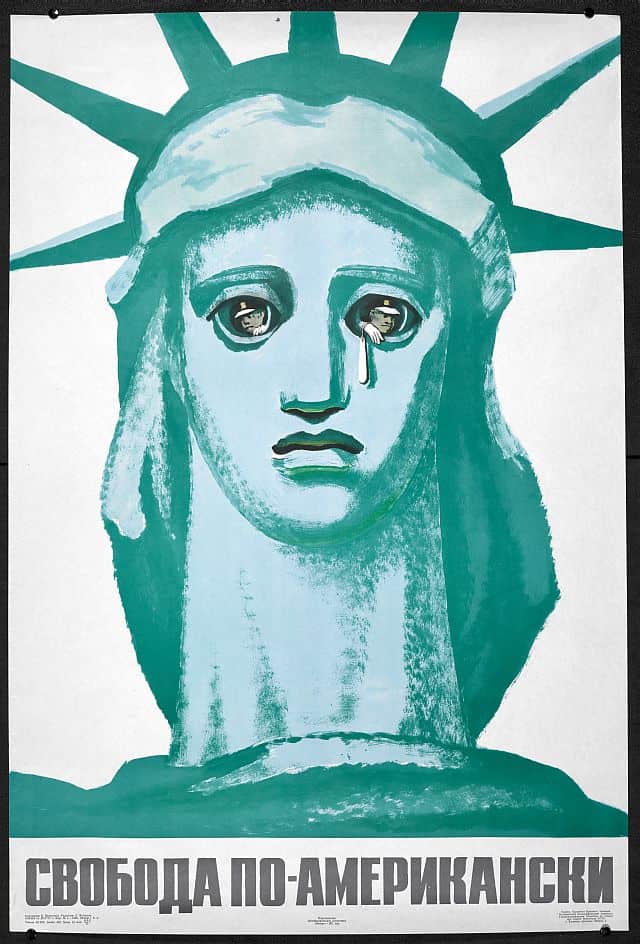Propaganda still shapes our beliefs and identity today
Ian Cooke, Head of Contemporary British Publications at The British Library, is one of the lead educators on the free online course, “Propaganda and Ideology in Everyday Life,” produced with The University of Nottingham. Here, he reflects on a Cold War-era poster and how such propaganda still shapes our beliefs and identity today.

You will have seen a detail from the image above advertising our new course “Propaganda and Ideology in Everyday Life.” We have focused in on the central image of police looking out from the eyes of the Statue of Liberty. It’s a striking image, but the poster in full is more striking still.
The poster provides an image of “Liberty inverted” – the world-famous statue, built to celebrate independence and welcome migrants to the new world, is turned into a look-out tower for forces of internal state control.
A Soviet critique of the USA
As such, this poster forms part of the Soviet state’s critique of the USA as repressive, imperialist and threatening to its own citizens.
During the 1960s and into the 1970s, the theme of state repression of civil rights in the USA could be seen in Soviet-produced posters, postcards and satirical magazines, such as Krokodil. These images were exported around the world as part of the Cold War struggle to extend influence and gain support.
In this wider narrative, the USA and its allies in NATO (most conspicuously, Great Britain) were portrayed as a threat -not just to their own populations, but to the wider world through their aggressive imperialism.
Cold War propaganda came from both sides
Cold War propaganda did not just come from Soviet states, as Britain and the USA both promoted a critique of communism as an almost alien ideology that robbed people of their freedoms.
In this view, NATO was a force for keeping the peace, while the Soviet Union was accused of spreading international instability, by encouraging anti-democratic groups in vulnerable countries around the world.
Propaganda from both sides could be seen and heard around the world, across a range of media, either overtly produced by state agencies or more secretly sponsored. Posters, newspapers and magazines, comic books, maps, films, and television and radio were all employed either to engage public sympathy or to provoke feelings of fear or hostility.
Propaganda is a tactic that continues today
Of course, the Cold War was not the only example of the use of propaganda, and the British Library’s collections contain a vast variety of materials and images that have been used to influence and persuade.
It’s a tactic that continues today. We encounter the use of words and images to encourage us to feel or behave in a certain way across different media in our daily lives.
Shaping our beliefs and identity
In our course, we are interested in the power that these cultural objects can have to shape our beliefs and identity.
The Statue of Liberty poster, which we’ve used as our lead image, speaks forcefully about different concepts of freedom and control. We’ll address this in detail in our first week.
As the course progresses, we will examine questions such as our feelings of identity and belonging, either to a nation or to the landscape around us; shared notions of justice and the legitimacy of protest; and the impact that publicity and advertising has on our attitudes and behaviours.
This course is about the objects, and especially the images, that we encounter in our everyday lives. We’ll be encouraging you to share examples that you have found, and to discuss these images with other learners on our course.
Is there a piece of propaganda that sticks in your mind? Tell us in the comments below or share it on social media using #FLpropaganda. Want to find out more about propaganda today? Join the free online course, “Propaganda and Ideology in Everyday Life” now.




